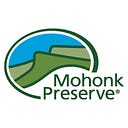Research Report #13 — Snow
For many years scientists and naturalists have been studying and observing the flora and fauna of the Shawangunk Ridge. Foremost among them was Daniel Smiley, for whom Mohonk Preserve’s Daniel Smiley Research Center is named. Dan wrote numerous reports summarizing his observations on various topics. This regularly occurring series will feature some of these reports; some hold tremendous scientific value today and just await an interested researcher to follow up, others showcase a quirky sense of humor or highlight an oddity of nature.
Read the report: “Snow.” August, 1978. Daniel Smiley.
A Note from Paul Huth, Director of Research Emeritus:
Of the dozen parameters possible to record each day in the Weather Observers Record Book at the Mohonk Lake Cooperative Weather Station of the National Weather Service, five seasonally have to do with frozen precipitation. Probably the most difficult of these that are measured is the snowfall during the 24 hour period, in inches and tenths, and snow on the ground, to the nearest inch.
The Mohonk Lake Cooperative Weather Station has been operating continuously since January 1st, 1896, over 120 years! In his Research Report Introduction, Daniel Smiley, the 5th and longest serving official weather observer at Mohonk, notes that prior to his appointment in 1938, snow measurements and some records “were not as accurate and complete as they might have been.” For his summary, each of some 640 monthly weather reports were reviewed and analyzed. Here the “winter” season was considered to be the consecutive six months of November to April, and not the calendar year.
As a keenly observant and investigative naturalist, Dan presented topics in this Research Report that he felt important and interesting, such as average snowfall, record snow depths, the earliest and latest snowfall, record snowstorms, snow on the ground, white Christmas, snow rolls, ice under snow, temperature of snow on the ground, and storms of special note. Many of these he had witnessed and observed first hand since his home was on the mountain near the weather station.
Over the more than 40 years that I have been involved with research as Dan’s assistant and later as the Mohonk Preserve’s Director of Research, it is satisfying to see that weather observation is still a foundation of many studies and a legacy data set of the Preserve’s Conservation Science Department. Today, a team of staff and trained Climate Tracker Volunteers, still collects daily weather information at the same location and using the same procedures since the weather station was established over 122 years ago!
Since Dan wrote his Research Report summary of snow for the 80 year record, 1896–1976, we can add the following for the 121 years of record, 1896–2016:
- Average winter snowfall, November-April, 1896–2016 = 58.5”. Dan reported 57.3”.
- Earliest measurable snowfall (of more than a trace) = 4 October 1987, 2.0”. Dan reported 1.5”, 19 October 1972.
- Latest measurable snowfall (of more than a trace) = 9–10 May 1977, 13.2”!
- Winter with least snowfall = 1988–1989, 14.2”. Dan reported 16.0”, winter of 1912–1913.
- Winter with the greatest snowfall = 1995–1996, 123.5”! Dan reported 114.5”, winter of 1966–1967.
- Most snowfall on one day = 14 December 1915, 24.0”.
In recent years, the one change that seems to be observable but is not well documented is that at the end of many snowstorms, with an intrusion of warmer air, snow changes over to freezing rain or just cold rain. Depending on the duration, this can depress the freshly fallen snow on the ground and form an ice crust on the snow surface. This results in difficulties for wildlife, like White-tail Deer and Turkeys, out daily in search of food, and for winter recreational sports, like cross-country skiing. The other observation we have made is a change toward less consistent unbroken snow cover on the ground, especially in the months of January, February, and March. Between storms it is not uncommon for daily temperatures to be warm enough to result in considerable bare ground and only patchy snow. Also frequently, winter storms are not frozen, but occur as rain.
Read the report: “Snow.” August, 1978. Daniel Smiley.
